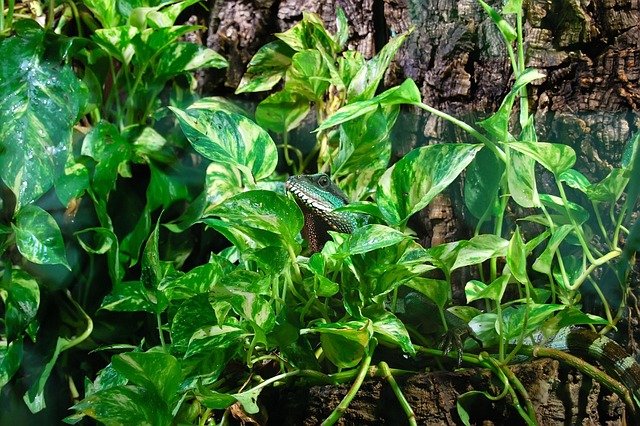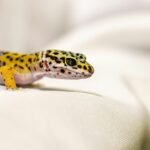Creating a bioactive reptile enclosure can significantly enhance the quality of life for your pet. You will need specific materials such as a suitable substrate, live plants, and beneficial microorganisms to establish a thriving ecosystem. This setup mimics the natural habitat of reptiles, providing them with enrichment and promoting their overall health.
Start by researching which reptiles you plan to house, as their needs can vary greatly. Once you have your species in mind, gather items like a drainage layer, soil, and appropriate plants that can thrive in your enclosure’s conditions. Links have been provided within this article making it convenient to find everything you need.
Incorporating a bioactive system not only benefits your reptiles but also makes enclosure maintenance easier. With the right balance of components, the enclosure can create a self-sustaining environment, making it a fascinating project for any reptile enthusiast.
Disclaimer: This information is geared towards tropical species and care may be different for desert/arid reptiles.
Components and Supplies
Creating a bioactive reptile enclosure requires specific components to ensure the environment mimics natural habitats. Focus on substrate layers, plants, and microfauna (clean up crew) to establish a thriving ecosystem.
Substrate and Drainage Layers
There are 4 main layers of substrate and drainage in a bioacitve enclosure: Drainage layer, substrate barrier, substrate, and leaf litter.
Drainage Layer: A drainage layer, typically made of clay balls or gravel, prevents waterlogging. Place 1-2 inches at the bottom of the enclosure.
Substrate Barrier: Next cut a sheet of mesh screen to fit the entire base of the enclosure. Lay this on top of the drainage layer to prevent the substrate from mixing into the drainage layer.
Substrate: The substrate is crucial for promoting biological activity and maintaining moisture. You can create your own mix or buy a premade one. There are a lot of different options and tutorials for customs mixes. One I recommend is a blend of 4 parts organic potting soil (no fertilizers) 2 parts reptibark, and a few hand fulls of sphagnum moss depending on the size and desired humidity of your enclosure. Add 3-4 inches of substrate to allow room for the plants’ roots.
Leaf Litter: To encourage beneficial microbes, consider adding a thin layer of leaf litter. This not only enhances aesthetics but also provides habitat for microfauna (clean up crew).
Links: Clay Balls Mesh Screen Josh’s Frogs Bioactive Substrate MIx Leaf Litter
Plants and Decoration
Research plants that are safe for your reptile and species that will thrive in the same conditions as your reptile. Common choices include pothos, snake plants, and ferns. Use plants to promote humidity and provide hiding spots throughout the enclosure.
Decorative elements like rocks, logs, and branches add structure to the habitat. Make sure these items are free of pesticides and other chemicals.
Arranging plants and decorations in a naturalistic way enhances visual appeal and offers essential climbing and basking areas for your reptiles.
Microfauna and Cleanup Crews
Microfauna play a vital role in maintaining the ecosystem. Introduce species like springtails and isopods as part of your cleanup crew. They help break down waste and organic matter.
These tiny organisms create a healthy environment by decomposing leftover food and waste, which prevents mold growth.
You can obtain these organisms from specialty online retailers or local pet stores specializing in bioactive setups. Monitor their population to ensure they thrive in your enclosure.
Links: Springtails and Isopods Bundle
Introducing Reptiles and Microfauna
Once your enclosure is set up, it’s time to introduce your reptiles and beneficial microfauna. Ensure the enclosure has stabilized for at least a week, allowing plants to acclimate. Before adding reptiles, check temperature and humidity levels to ensure a comfortable environment.
Introduce microfauna like springtails and isopods to help break down organic waste. These organisms contribute to a clean, balanced ecosystem. Gradually add your reptiles, observing their behavior and adjusting as necessary. Monitor their feeding and hiding habits to ensure they are comfortable in their new home.
Ongoing Care and Observation
Regular maintenance is essential for the health of your bioactive enclosure. This involves monitoring humidity and temperature levels, which can be done with a hygrometer and thermometer. Maintain humidity levels appropriate for your reptile’s needs.
Check for mold or dead plant matter and remove it promptly. Additionally, weekly spot cleanings are necessary to manage waste. Observe your reptiles and microfauna regularly to ensure all inhabitants are healthy. Adjust feeding, lighting, or temperature as needed to create a thriving environment.
Conclusion
We hope you enjoyed reading this article and will consider giving your reptile a bioactive setup. They may seem confusing and overwhelming at first but they can be very beneficial to your pet when done properly. If you liked this post and want to see more reptile and pet related content feel free to check out some of our other posts. Thanks for reading and best of luck on your bioactive journey!
As an Amazon Associate I earn from qualifying purchases



